Buddhist statues, which were introduced to Japan in the 6th century from the Korean peninsula via India and China along with the arrival of Buddhism, have been objects of Japanese people’s faith and beliefs for a very long time.
Kyoto, home to over 1500 temples, has been a hub for creating and worshiping various Buddhist statues since the Heian period. This is because people find peace, comfort, and tranquility in the presence of Budda.
Buddhist statues are crafted to convey specific meanings, and every aspect of their poses, gestures, and clothing is significant.
No prior knowledge of Buddhism is required to enjoy temples in Kyoto, but I’d like to share some useful knowledge about Buddhist images and also how to enjoy them even more in Kyoto!!
〜Classification of Buddhist Statues〜
Buddhist statues are basically classified into four categories in order of hierarchical rank, Nyorai (如来, Tathagata), Bosatsu (菩薩, Bodhisattva), Myoo (明王, Acala) and Ten or Tenbu (天 or 天部, Deva). Here are the types of each Buddha image and how to recognize them.
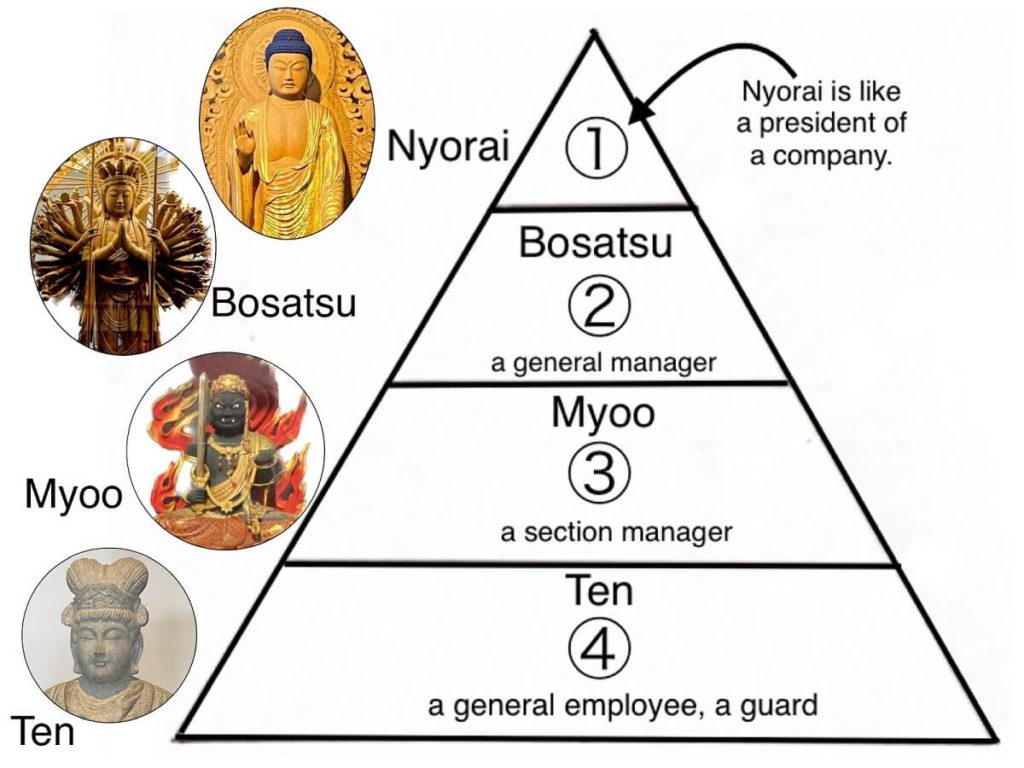
① Nyorai (Tathagata)

Nyorai represents the appearance after enlightenment and is characterized by simple attire. Because Nyorai has given up all belongings, social status, wealth, and family, there is no need to dress up, so it wears only a simple garment.
If you see a Buddha statue with tightly-curled hair on the head, it’s Nyorai. The hair is called “Rahotsu” (螺髪), and it’s thought that the hair is curled up because the Buddha left his hair alone during his ascetic practice. At Konkai-Komyo-ji (金戒光明寺) in Kyoto, there is a stone Buddha nicknamed “Afro Buddha,” who has an afro-like hairstyle as a result of training for an unnervingly long time.
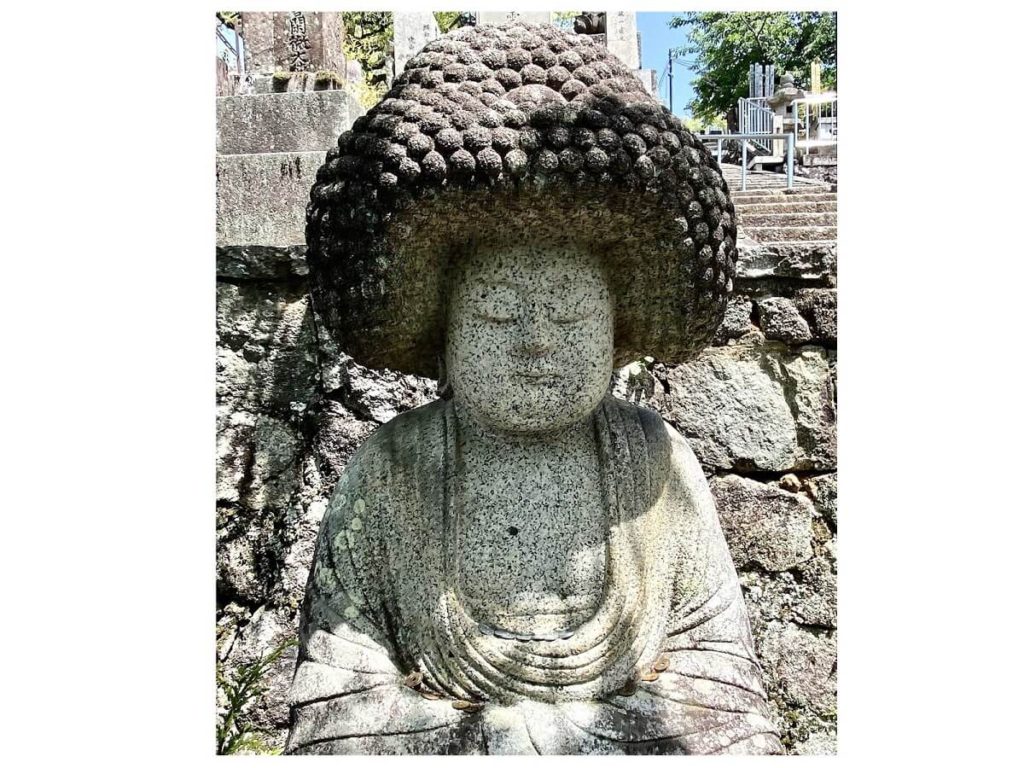
Another prominent feature is a spot between the eyebrows called Byakugo (白毫). This is a curl of white hairs extending from between the eyebrows, from which light is said to emanate.
Although it may be hard to see in temples’ halls because of the dim light, Nyorai has webbed fingers. You may wonder why…. Having webbed fingers allows Nyorai to catch and save all people without letting them slip between its fingers.
Only Dainichi Nyorai, who has the pose like ninja’s hands, is adorned with various ornaments, such as a crown and bracelets.

〜Types of Nyorai and temples famous for it in Kyoto〜
- Shaka Nyorai (釈迦如来) – Seiryo-ji (清涼寺), etc.
- Amida Nyorai (阿弥陀如来) – Eikan-do (永観堂), Sanzen-in (三千院), etc.
- Yakushi Nyorai (薬師如来) – Shingo-ji (神護寺), To-ji (東寺), etc.
- Dainichi Nyorai (大日如来) – To-ji (東寺), etc.
② Bosatsu (Bodhisattva)
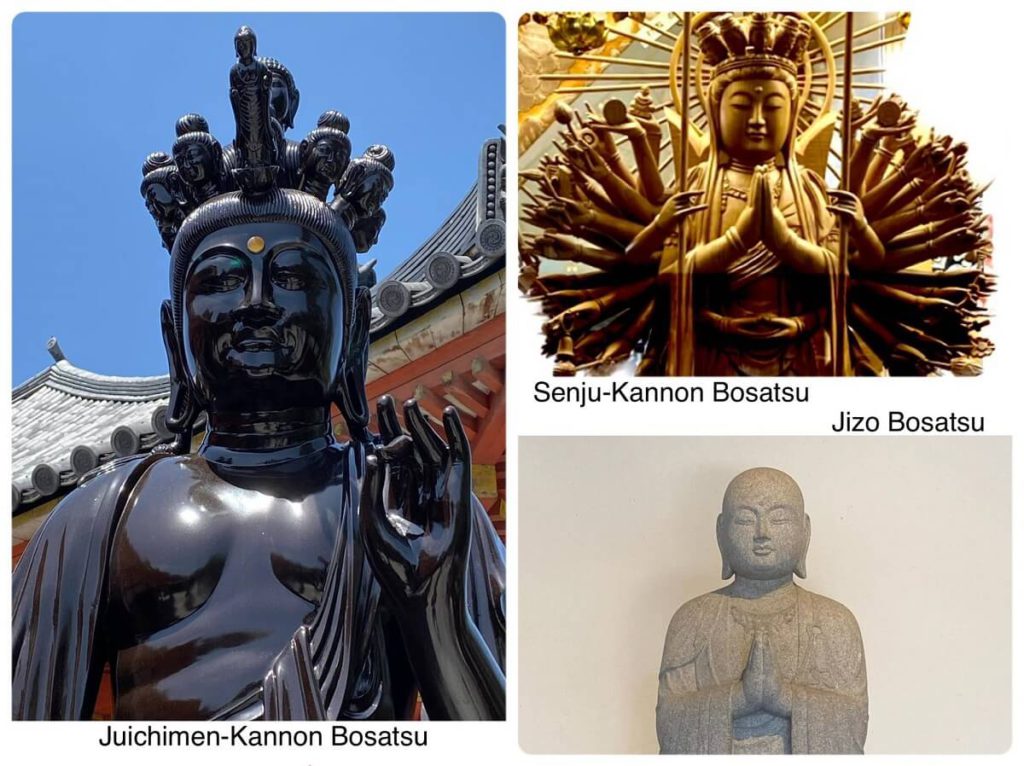
Bosatsu postpones its own enlightenment to save people with mercy, which is why it represents the appearance before reaching enlightenment and is characterized by lavish decorations like a crown, necklaces and bracelets. Some Bosatsu have many faces on their heads or a lot of hands.
Juichimen-Kannon Bosatsu ( 十一面観音菩薩), also known as Eleven-faced Kannon Bosatsu, is a Buddha who watches over us from all directions to redeem all, with eleven faces on its head. Senju-Kannon Bosatsu (千手観音菩薩), also known as Thousand-armed Kannon Bosatsu, is considered a merciful Buddha who saves all living beings with a thousand hands. Since the Heian period (794-1185), Senju–Kannon Bosatsu has been depicted with a total of 42 arms, 20 on each side, in addition to the two arms in the front. Most of them also have eleven faces on their heads.
Only Jizo Bosatsu is represented as a monk with a shaved head and kesa (袈裟, a priest’s robe), not dressed up like other Bosatsu. You may notice a Jizo statue on the roadside while walking, and it’s known as the most familiar Bosatsu.
- Juichimen-Senju-Kannon Bosatsu (十一面千手観音菩薩) – Sanjusangen-do (三十三間堂),etc.
- Miroku Bosatsu (弥勒菩薩) – Koryu-ji (広隆寺),etc.
③ Myoo (Acala)
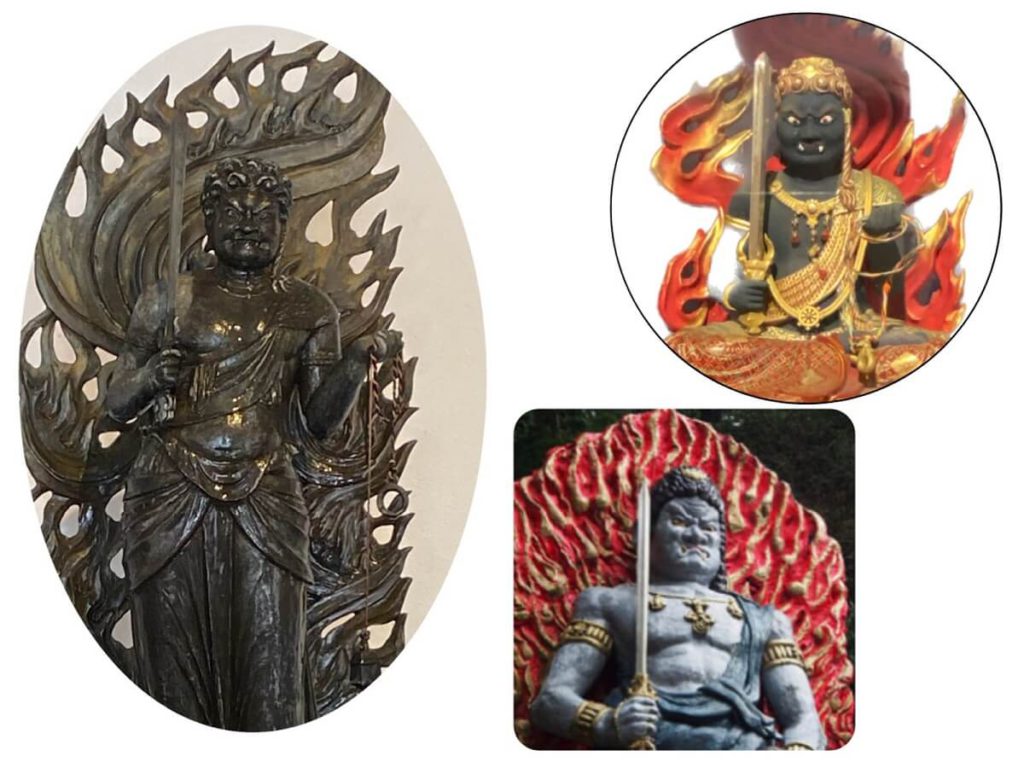
Myoo is considered to be the third in rank after Nyorai and Bosatsu, serving as a guide for those who do not follow the teachings of Buddha. It is often depicted carrying a flame, its hair standing back in anger, and weapons or snakes in its hands. We used to feel fear when we saw their frightening faces as children. I think it was a reminder that they would scold us if we did something wrong.
④ Ten (Deva)

Ten is also called Tenbu. It serves as a protector of the three higher-ranking Buddha statues mentioned above. Many of the Ten have human-like appearances and expressions, making them more familiar. Some Ten statues, such as Shitenno (四天王) and Kongorikishi (金剛力士), look a little scary, but they seem more human than Myoo statues. There are also Ten statues that take the form of women, such as Benzaiten(弁財天) and Kishoten (吉祥天).
Just keep this in mind! Simply put, with a few exceptions, if the Buddha has tightly-curled hair on its head, that is Nyorai. If it wears a crown, accessories, or has many faces and hands, that’s Bosatsu. If it has an angry face, that is Myoo. And if it has the most human-ish face, it is most likely Ten.
〜Recommended temples to view Buddhist statues〜
Of course, you can enjoy the wonderful Buddha images of great artistic value as well as religious and historical value at any temple, but let me introduce two temples in Kyoto that I highly recommend. Photography is not allowed inside either hall, so I cannot post photos here, but both are breathtaking sights. Please visit them in person to find out for yourself!
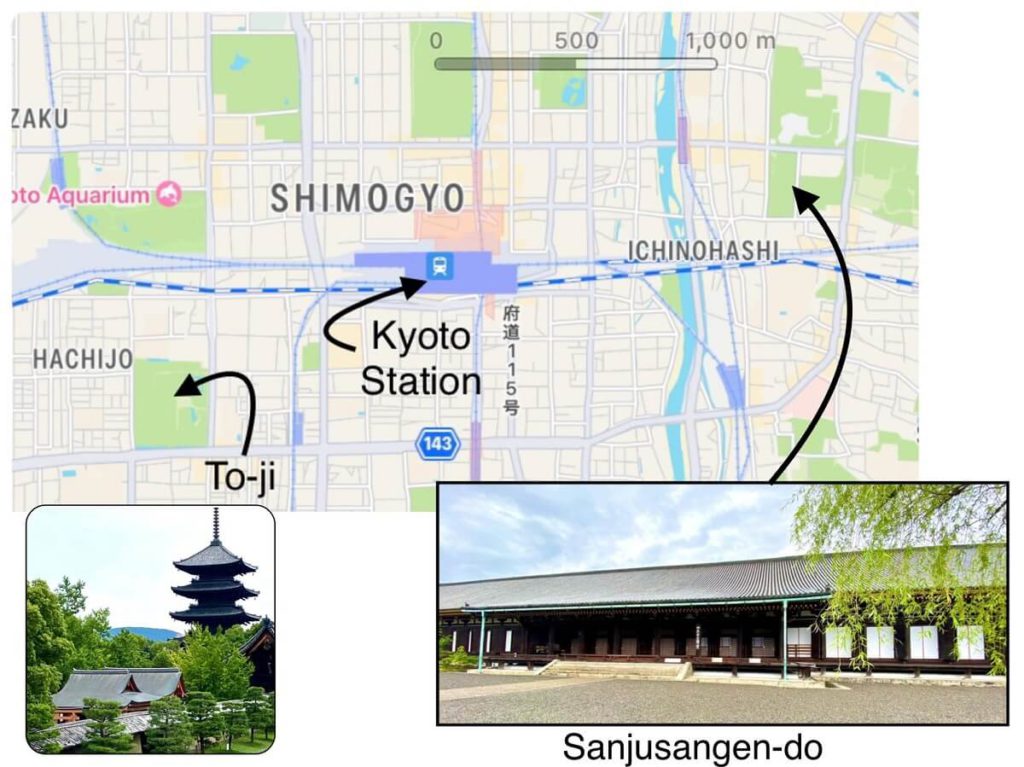
To-ji (東寺)
To-ji Temple is famous for its five-story pagoda, but there are several buildings on the temple grounds, one of which, Kodo (講堂), houses a total of 21 Buddhist statues, which express the world of enlightenment through a three-dimensional Mandala (立体曼荼羅). You can see all four types of Buddha statues I mentioned above at once and see the differences!
Sanjusangen-do (三十三間堂)
The hall is home to 1,001 thousand-armed Kannon statues, 500 human-sized statues on each side, centering on the main statue, Senju-Kannon Bosatsu.
It is said that every single one of them has a different expression, and there is always a face that resembles yours.
Sanjusangen-do ←Open the link to see the Kannon statues in the hall!
Did you enjoy the article? Did you find your favorite Buddha statue you’d like to see?
Recently, Buddhist statue viewing has become popular among even young people as various ways of enjoying Buddhist statues can be considered beyond religion.
Next time you have a chance to visit a temple, please pay attention to the Buddha images. Just by knowing the features, roles, and points of interest of Buddhist statues, you will enjoy looking at them many times more!!
Born and raised in Kyoto. A private tutor and a volunteer tour guide in Kyoto. Love sewing, kimono remaking, traveling, cooking, gardening, playing the shamisen(三味線), making stained glass and grandparenting as well.

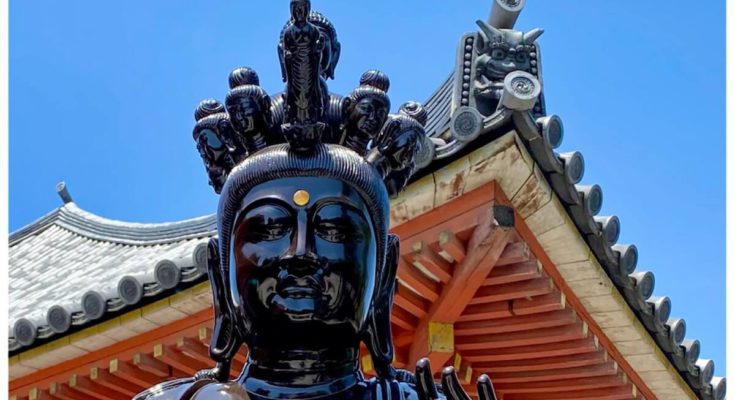
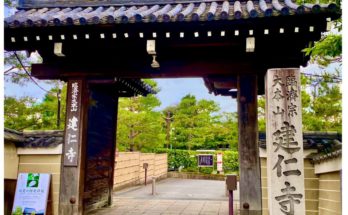
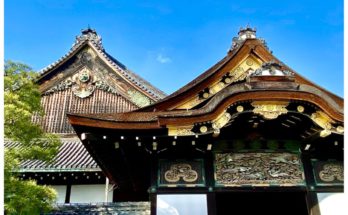

Reading your explanation,I totally understand Budda statues.
Thank you Rieko san.
Thank you for your comment!!
I am very happy to hear that from you, Masayo san!!
Kudos to the author for a captivating article ! It is a concise and informative guide that beautifully captures the essence of appreciating Buddhist statues in Kyoto.
Our tour of Sanjusangen-do with Rieko-san was absolutely thrilling! Every step revealed breathtaking beauty and a deep sense of history. It was an unforgettable experience that left us in awe. Thanks again, Rieko!
Hi Irena,
I am very happy to hear that my blog has helped you gain a better understanding of Buddhist statues. As you said, the 1001 Kannon statues in Sanjusangen-do were even awe-inspiring. It was a pleasure to share the Kyoto tour with you two!
Thank you, Irena!
Thank you for this insightful article on how to enjoy Buddhist statues in Kyoto. The rich history and cultural significance of these statues make them a fascinating subject to explore. Your tips on approaching the statues with respect, learning about their symbolism, and understanding the rituals associated with them are invaluable for visitors. It’s important to appreciate the artistry and spiritual significance of these statues while being mindful of the cultural context. Your article not only serves as a guide but also encourages a deeper appreciation for the beauty and spirituality of Buddhist statues in Kyoto.
Thank you for reading and commenting on my blog. I’m glad you found my article helpful and interesting. I appreciate your perspective and respect for Buddhist Statues and their meaning. I hope you have a chance to visit Kyoto someday and see them for yourself.